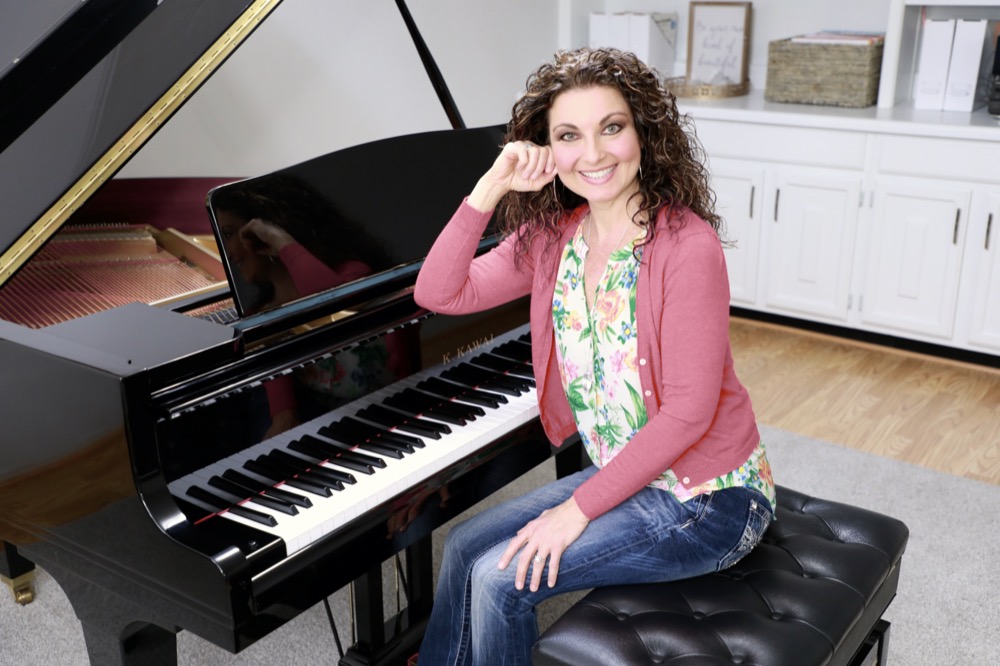Creating An Emotionally Safe Space in Piano Lessons
This post may contain affiliate links. If you purchase something through an affiliate link, I will receive a small commission at no cost to you. For more information, read the disclosure statement here.

When we think about teaching piano, it’s easy to focus on technique, repertoire, and theory. But piano teaching is also about nurturing our students by creating an emotionally safe space in our studios for them to be themselves.
The children that we teach may be little human beings, but they have big feelings and emotions. And sometimes they bring a lot of baggage with them to piano lessons.
They could have forgotten their homework, so they got a zero that day.
Or maybe they’ve switched schools, are struggling with one of their classes, or just having a moody day.
Or maybe they were involved in an argument with a sibling which resulted in being spoken to very harshly by a stressed out parent right before their lesson.
No matter what they have experienced earlier that day, or that week, when they enter our studios, they deserve to feel seen and important. They deserve to be treated with kindness, patience, and understanding.
They deserve to feel successful and musical.
And they deserve to feel emotionally safe.
Thinking of our students as whole individuals and approaching our interactions with them through the lens of creating an emotionally safe space for them can shape every aspect of our teaching in profound ways.
Here are three important ways we can foster emotional safety in piano lessons.
Creating an Emotionally Safe Learning Environment by Nurturing and Celebrating Creativity
Some of my most treasured teaching moments come from watching students embrace their creativity in unexpected ways.
I love it when my students bring something to their lesson that they created on their own.
Whether it’s a small composition or a cute jingle that they wrote, or a specific instance like the following story, taking the time to pay attention to and celebrate our students’ creativity can make a world of difference in how much they trust us and feel safe sharing their creations with us.
I teach two sisters, and the older sister had an idea. The older sister shared her idea with the younger sister, and they worked together to create a code that assigned a piano key to each of the 26 letters of the alphabet, which allowed them to play any word imaginable on the piano.
They were so excited to tell me about this at their lessons, and the first word they wanted to play for me was my name.
It was so special! Their faces, the youngest one’s face, especially, lit up and absolutely glowed because both sisters felt like they had done something so creative and were allowed to share it with me and be celebrated.
This brief 3-minute interaction made them feel seen, which made them feel special. It was really incredible.
These moments of creativity occur when students feel emotionally safe and valued.
When they know their ideas will be celebrated, not judged, they’re so much more willing to take creative risks and share their musical ideas and creations.
We can encourage this sense of safety in our studios by listening and being emotionally present, giving our students the knowledge that they are actually being heard (Hendricks et al., 2014).

Creating an Emotionally Safe Space by Being Sensitive to Student Anxiety
Creating emotional safety becomes especially crucial when working with anxious students because they/we (myself included) often have a difficult time feeling comfortable no matter where they are.
Throughout my years of teaching, I have taught many students who exhibit signs of anxiety. I relate to this very deeply because I have struggled with severe anxiety for my entire life.
That struggle has made me hypersensitive and more easily able to notice the anxiety in my own students.
If I sense that a student is becoming anxious in a lesson, I change what we’re doing to get their mind off of the task that triggered those anxious feelings.
I use encouraging language and help them feel seen and reassured, while helping them work through the task that caused the anxiety without drawing attention to the anxiety itself.
I’ve noticed that anxiety often stems from students feeling like they can’t perfectly do something that I’m asking them to do, even if it’s the very first time they’ve ever tried it (again, I am including myself here because I struggle with this too!).
This understanding makes it easy to adapt my teaching approach to calm their anxiety by working from their strengths to build their confidence so that we can circle back around to that weak area and focus on the challenge at hand without triggering the anxiety again (Hendricks et al., 2014).
Learning to become more attuned to those moments of anxiety is a powerful way to create an emotionally safe space for our students.
Creating an Emotionally Safe Space with Our Words
Our words can create an emotionally safe space that nurtures and encourages our students. Our words can also cause negative feelings to bubble up to the surface and make our students shut down.
The words we speak to our students can make a world of difference to them and can shape the way they view not only piano lessons, but the way they view themselves and their capabilities.
My studio has grown to be a very nurturing and encouraging place where I am my students’ biggest cheerleader and supporter.
I choose the language I use with each student very carefully and with purpose.
I use language that says to them, “I see you”. Language that builds them up. Language that fosters a sense of trust, growth, and mutual respect and admiration.
This kind of encouraging language can help our students feel safe to learn without fear of judgment or criticism (Hendricks et al., 2014).
I know I learn best when I’m not afraid of being judged or criticized, and if I can help my students to feel that way by using language that builds them up, that is one small thing I can easily do, and I am more than happy to do it.
Supporting the Whole Student by Creating an Emotionally Safe Space for Learning
Creating an emotionally safe space that promotes feelings of wellbeing and security in our piano lessons isn’t only about helping our students feel more comfortable.
It’s about creating an environment where our students are invited to engage in deeper-level learning without fear.
It’s about creating an environment where our students are invited to be their authentic and courageous selves.
When our students feel safe, seen, and supported, they’re emboldened to take creative risks, explore musical ideas, and develop their unique musical voices and their capacity for growth and expression.
By combining emotional safety with musical instruction, we can create an emotionally safe space and a nurturing environment where our students can truly thrive.
References
Hendricks, K. S., Smith, T. D., & Stanuch, J. (2014). Creating safe spaces for music learning. Music Educators Journal, 101(1), 35-40.
Don't miss out!
Follow on Facebook and Instagram, join the best Facebook group for piano teachers, and subscribe to the newsletter to get helpful teaching tips, resources, and tutorials delivered straight to your inbox every week.
Melody Payne
Melody Payne
Welcome!

Hi! I’m Melody Payne, a pianist and piano teacher, educational resource author, a fun-loving wife to the most wonderful and talented hubby I could ask for, and a lifelong learner who loves to share. I want to make your life as a music teacher easier by writing and sharing helpful and relevant music teaching articles, and by creating educational resources with your very own students in mind. If you are a parent who wants to enroll your child in piano lessons, I’d love for us to get started building those skills that can give your child a lifetime of musical enjoyment!

